In the first post of this two-part blog on early intervention adaptive strollers, we highlighted what an early intervention adaptive stroller is and when it might be appropriate to consider one for a client, discussed the realities as to why parents might be hesitant to consider one for their child, and included some strategies for introducing parents to the idea of having their child evaluated for complex rehabilitation technology (CRT).
The primary goal of this post is to provide detailed information on specific equipment and options available in terms of early intervention adaptive strollers. So let's get to it!
Mobility Base
Seating Orientation
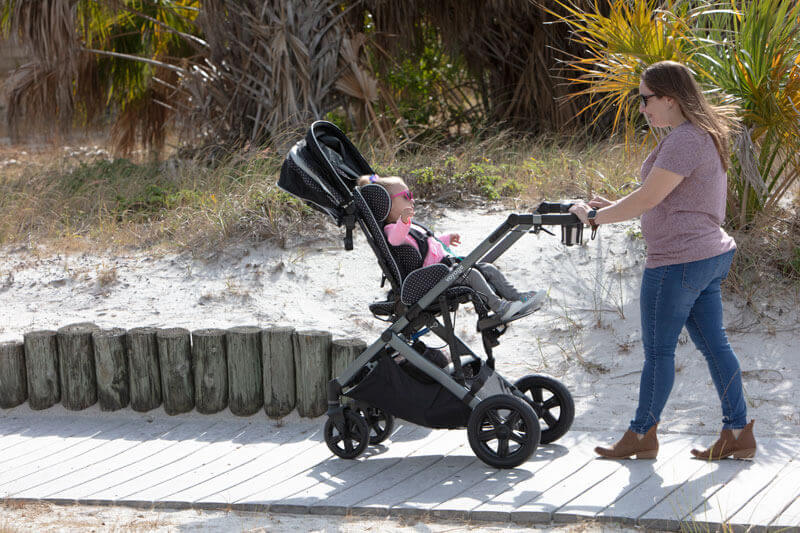
Depending on the child's age and/or medical needs, parents may feel the most comfortable if their child is facing them riding in the stroller. On the other hand, as the child grows, it may be more developmentally appropriate for the child to face forward while riding in the stroller. With that said, selecting a mobility base that allows for the caregivers to easily change the orientation of the seat is available on some early intervention adaptive strollers, such as the ZIPPIE® Voyage®.
Positioning Options
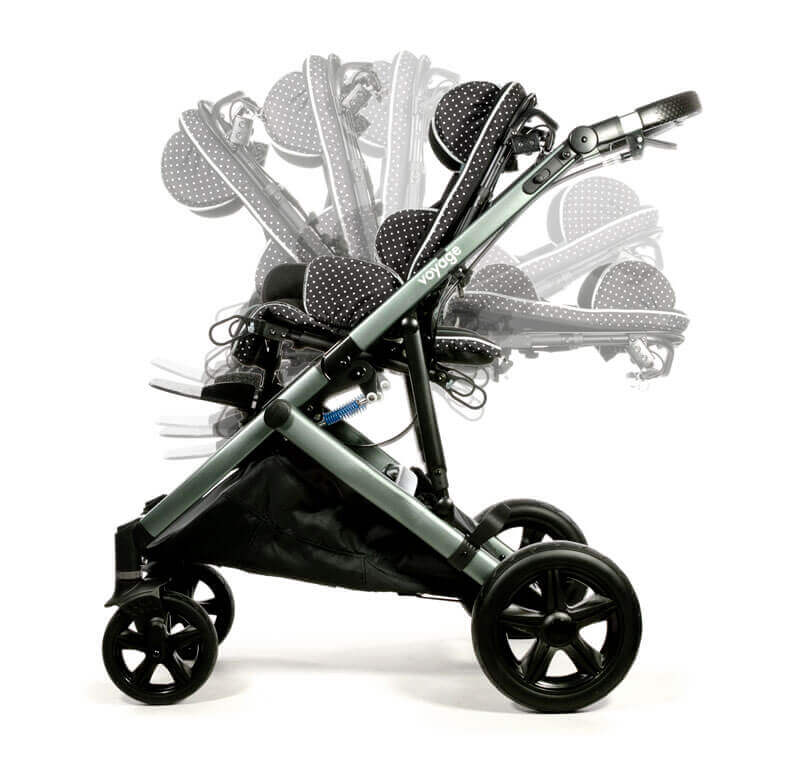
Changing a child's position while seated in the stroller can be important for reasons such as: respiratory function, eating, digestion, taking a nap while out in the community, engaging in play activities, improving the child's visual field, etc. A stroller base that includes the following options is helpful to address those reasons:
- Posterior tilt
- Anterior tilt
- Recline
Transporting the Base
Ability to Fold
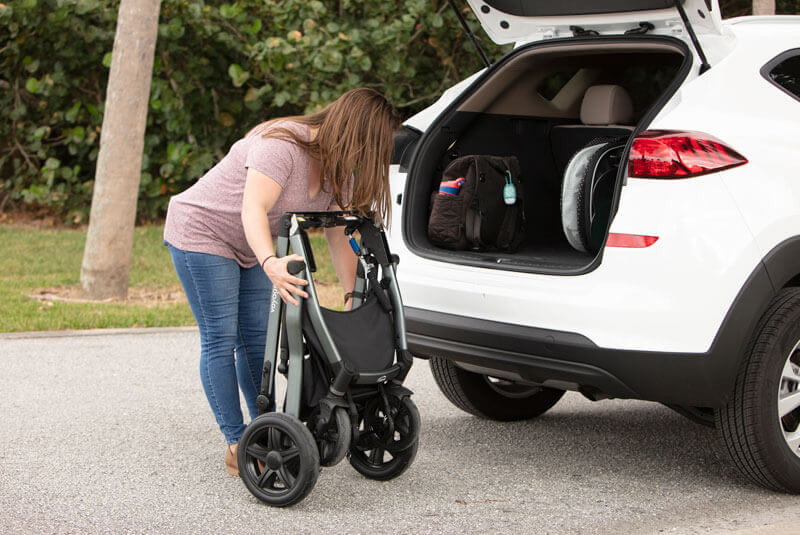
When we think of transporting a standard stroller, the ability to fold the stroller easily into a compact package that is lightweight enough to be lifted in and out of the trunk of a car or the back of a minivan or SUV, likely comes to mind. For parents of babies and toddlers with special needs, seeking a mobility device that can be broken down and lifted easily is equally as desirable. If possible, be sure to provide the parents with the opportunity to fold and reassemble the stroller during the evaluation.
Transit Approved
Whether for school, medical appointments, or to get around in the community, some children who are appropriate for early intervention adaptive strollers have to be transported in vehicles while sitting in their stroller. Selecting a device that is transit approved will provide peace of mind to the families.
Seating and Positioning
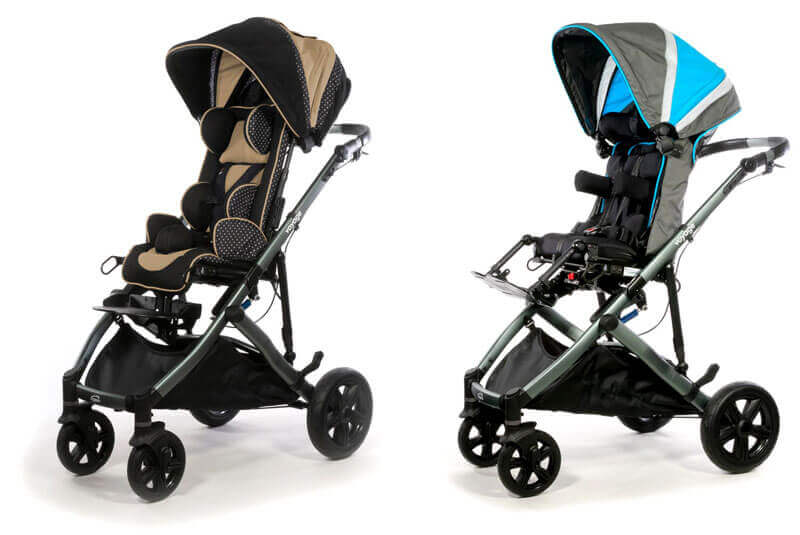
Ensuring that the child is properly positioned and supported at all times while using an early intervention adaptive stroller is key. Some children may require a great deal of support, while others may need a more moderate level of support. Be sure to review all of the options for the various components on the seating systems and how they function, including adjustability. Seating system components include:
- Head supports
- Seat and back supports
- Upper and lower extremity supports
- Lateral and medial supports
- Positioning belts
Everyday Design and Function
Some parents would make the case that the items listed in this category are the most important from their perspective, which means we need to take all of the areas into consideration when working through the provision process of an early intervention adaptive stroller:
- Aesthetics - colors, patterns, overall look, etc.
- Canopy - ease of function and peek-a-boo feature to look at the child while the canopy is in place.
- Storage - space to carry supplies, hold car keys, cup holders, etc.
- Angle-adjustable stroller handle - ability to adjust the handle to the most comfortable position based on the height of the individual pushing the stroller at any given time.
- Additional medical equipment compatibility - ventilator tray, IV pole, and oxygen tank holder.
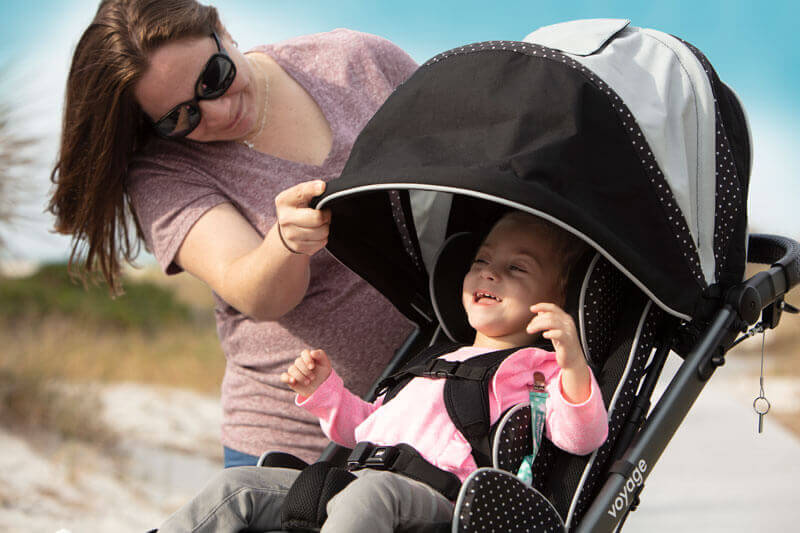
At the end of the day, it is important to remember that each client, his needs, and the needs of his caregivers are all different. As members of the CRT provision team, it is our role to assist the family with selecting the best device and options that meet their needs and desires, even if the family decides to stray from exactly what we believe is best. The good news is there are lots of options with great potential to find a compromise that will benefit the child the most.
Thank you for reading our blog! We love hearing from you, so please do not hesitate to reach out to us. We encourage you to leave a comment below.
Always remember at the end of the day, your client is your number one priority!
- Angie
Follow Angie on Twitter @ATigerKiger